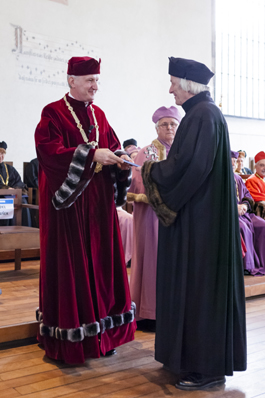 |
Archiweb brings you the full text of the speech by the new Dean of the Faculty of Architecture at CTU, Prof. Ing. arch. Ladislav Lábus, Hon. FAIA, delivered at the ceremonial inauguration of the Rector and Deans of CTU on Tuesday, March 25, 2014, at the Bethlehem Chapel.













